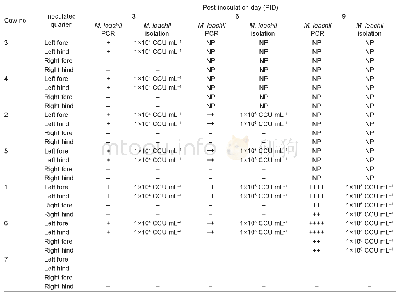《Table 1 Growth of cultivable bacteria isolated from sediments in Tianjin Port in different saliniti
 提示:宽带有限、当前游客访问压缩模式
提示:宽带有限、当前游客访问压缩模式
本系列图表出处文件名:随高清版一同展现
《中国天津港海底吹填淤泥中嗜盐细菌的分离及遗传分析(英文)》
Fig.3 and Table 1 summarized the diurnal variation and sums of bacteria cultivated in the seven salt concentrations in the culture medium.With each stepwise increase of salinity from 0.5%to20%,the number of total bacterial colonies in each group decreased.For example,the number of total bacterial colonies in the 0.5%salinity medium was12.9-fold that of the 20%salinity culture(Fig.3).The results demonstrated that bacteria grew faster in the 0.5%salinity culture compared with higher concentrations,and bacterial colonies were observed after 12 h.Bacterial growth was slower in the 15%and 20%salinity cultures,and colonies were only observed after 60 and 72 h,respectively(Table 1).In conclusion,when the salinity was 0~5%,there were more isolated bacteria,and they grew faster.As the salinity increased from 10%to 20%,the number of cultivable bacterial strains decreased dramatically and growth slowed.Therefore,a salt concentration ranging from 5%to 10%is optimal for most salt resistant strains isolated from the marine sediment.
| 图表编号 | XD00199116500 严禁用于非法目的 |
|---|---|
| 绘制时间 | 2018.10.01 |
| 作者 | 张国刚、刘成宝、贾美清、黄静、谢李娜、尹雪、隋鑫 |
| 绘制单位 | 天津师范大学生命科学学院、天津师范大学动植物抗性实验室、天津师范大学生命科学学院、天津师范大学动植物抗性实验室、天津师范大学水资源重点实验室、天津师范大学生命科学学院、天津师范大学动植物抗性实验室、天津师范大学生命科学学院、天津师范大学动植物抗性实验室、天津师范大学生命科学学院、天津师范大学动植物抗性实验室、天津师范大学生命科学学院、天津师范大学动植物抗性实验室 |
| 更多格式 | 高清、无水印(增值服务) |
查看“Table 1 Growth of cultivable bacteria isolated from sediments in Tianjin Port in different salinities (×103 cfu/g)”的人还看了
-

- Table 1 Metadata summary of the“Temporal-spatial cultivated land and conversion from dry farmland to paddy dataset in th





